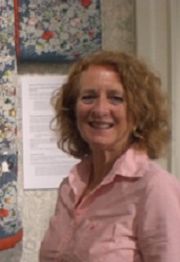Collaborative research with National Trust unveils history of Standen
Art historian Anne Stutchbury’s passion for volunteering at Standen House and Garden in West Sussex led to her studying for her PhD – and unveiling a fascinating part of the property’s history.
 As part of her doctoral research, art historian Anne Stutchbury created a fascinating glimpse of how Edwardian-era world travel inspired interior design.
As part of her doctoral research, art historian Anne Stutchbury created a fascinating glimpse of how Edwardian-era world travel inspired interior design.
Anne, who receives her doctorate this week, curated an exhibition at Standen House and Garden. Called ‘Spirit of Adventure: The Beales’ world tour 1906-7’, it documented the exotic travels of the family, who lived in the East Grinstead home during the late 19th century.
The Beales’ epic journey took them to such faraway destinations as India, Burma, Ceylon and Japan, finishing up in Canada in July 1907. Anne’s exhibition showed how the family’s liking for the ‘exotic’ and the ‘oriental’ was reflected by the many souvenirs and decorative objects purchased during their journey.
The exhibition included beautiful kimonos and a folding screen from Japan, plus extracts from the family’s travel journal, sketch books, letters and diaries.
Standen was built for the Beale family during 1892-94 as a country retreat from their London home, and was designed by Arts and Crafts architect Philip Webb.
Anne says: “One of the chapters of my thesis explores how the Beales’ experience of foreign travel informed Standen’s interior and exterior spaces.
“I adapted the research of this chapter to write and curate the Beales’ world tour exhibition. The exhibition was designed to demonstrate that the Beales’ decorative taste was inspired by their experiences of foreign travel and ideas of empire.”
In addition to writing up her research, Anne gave a series of presentations to the staff and volunteers at the house.
The exhibition was part of a collaborative research project with the National Trust, which took over Standen in 1972, and the Arts & Humanities Research Council (AHRC).
Originally part of an influential Birmingham Unitarian network, the Beales were a wealthy middle-class family whose main residence, from 1875, was in Holland Park, the centre of London’s artistic community.